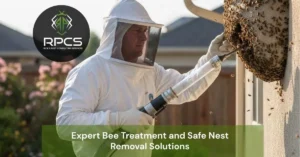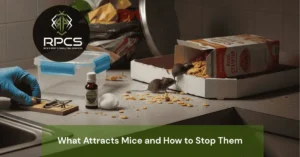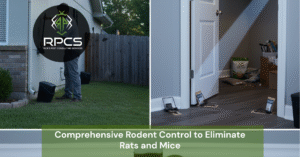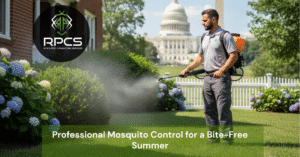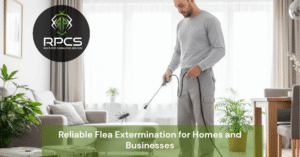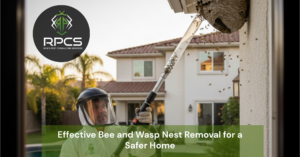Rodents are more than just an unsightly nuisance; they pose a serious threat to your business. From contaminating food to damaging wiring, insulation, and structures, rats and mice can cause thousands of dollars in property damage and even put your company’s reputation at risk. The key to staying rodent-free? Effective exterior rodent control.
By implementing strategic and proactive measures around the outside of your commercial property, you can prevent infestations before they start. In this guide, we’ll explore the best exterior rodent control techniques to protect your investment, staff, and customers.
Why Exterior Rodent Control Matters
Many businesses focus only on interior pest control, but rodents often invade from the outside. Unsealed entry points, overgrown vegetation, and poorly stored garbage create a welcoming environment for rats and mice.
Exterior control is essential because:
- It stops rodents before they enter the building
- It prevents contamination and structural damage
- It supports health code compliance
- It reduces the need for costly interior treatments
1. Seal All Exterior Entry Points
Rodents can squeeze through openings as small as a quarter inch. To stop them from entering:
- Inspect the building perimeter, foundation, vents, utility lines, and doors
- Seal cracks, gaps, and holes with rodent-proof materials like steel wool, metal flashing, or concrete
- Install door sweeps and weather stripping on exterior doors and loading bays
- Use mesh screens over vents and utility openings
This simple step significantly reduces the chance of rodent intrusion.
2. Keep Landscaping Trimmed and Clean
Overgrown landscaping provides cover and nesting sites for rodents. Maintain a rodent-proof landscape by:
- Trimming shrubs, trees, and bushes at least 12 inches away from walls and roofs
- Removing dense ground cover near building foundations
- Keeping grass short and weed-free
- Eliminating fallen fruit, nuts, or seeds that may attract rodents
Consider installing a gravel perimeter or concrete buffer to discourage burrowing near the foundation.
3. Secure Trash and Food Sources
Rodents are attracted to garbage, especially food waste. Proper waste management is critical:
- Use rodent-proof trash bins with tight-fitting lids
- Empty dumpsters regularly and keep them at a distance from the building
- Clean spills and sanitize the surrounding area
- Avoid overfilling bins, which can leave bags exposed
- Make sure outdoor break areas are regularly cleaned, and food isn’t left behind
Reducing access to food outside discourages rodents from lingering.
4. Install Rodent Bait Stations and Traps Around the Perimeter
Professional-grade bait stations and traps placed strategically around your property help monitor and reduce rodent populations:
- Place stations along walls, fences, near garbage areas, and entry points
- Use tamper-resistant bait boxes for safety and compliance
- Replace bait regularly and monitor for signs of activity
- Use snap traps or electronic traps in problem areas
For best results, have a licensed pest control technician set up and maintain these systems.
5. Eliminate Standing Water Sources
Just like food, rodents need water to survive. Eliminate water sources by:
- Repairing leaks in outdoor faucets, pipes, and irrigation systems
- Ensuring proper drainage around the property
- Avoiding stagnant puddles or pooling water
- Keeping gutters clean and downspouts extended away from the foundation
Controlling moisture reduces the property’s overall appeal to rodents.
6. Use Rodent-Repellent Materials and Devices
Modern rodent deterrents can be integrated into your exterior defenses:
- Ultrasonic rodent repellents (battery or solar-powered) for discreet protection
- Rodent-repellent sprays (non-toxic, natural) applied to potential entry points
- Copper mesh for stuffing holes in vents, pipes, or gaps prevents gnawing
While these aren’t foolproof on their own, they’re effective as part of a larger strategy.
7. Schedule Regular Inspections and Professional Services
Rodents are persistent, and infestations can happen quickly. Routine professional inspections help detect signs early:
- Droppings near exterior walls or trash areas
- Gnawed materials or chewed wiring
- Burrows in the ground or under structures
- Grease marks or runways along walls
Partnering with a commercial pest control service ensures long-term rodent management with documentation for health inspectors and landlords.
8. Educate Staff and Tenants
Everyone on-site plays a role in rodent prevention:
- Train staff on proper food disposal and storage
- Encourage employees to report signs of rodent activity
- Post reminders in break areas and around dumpsters
- Include rodent control in your workplace maintenance policies
A vigilant and informed team helps prevent problems before they escalate.
Final Thoughts
Rodents can silently destroy your commercial property, tarnish your brand, and violate health codes, but with the right exterior rodent control plan, you can keep your business secure, clean, and pest-free.
Combining physical barriers, sanitation, professional treatment, and regular monitoring gives you a significant advantage. Don’t wait for rodents to become a costly problem; take preventative action today and protect what matters most. Contact us today!

